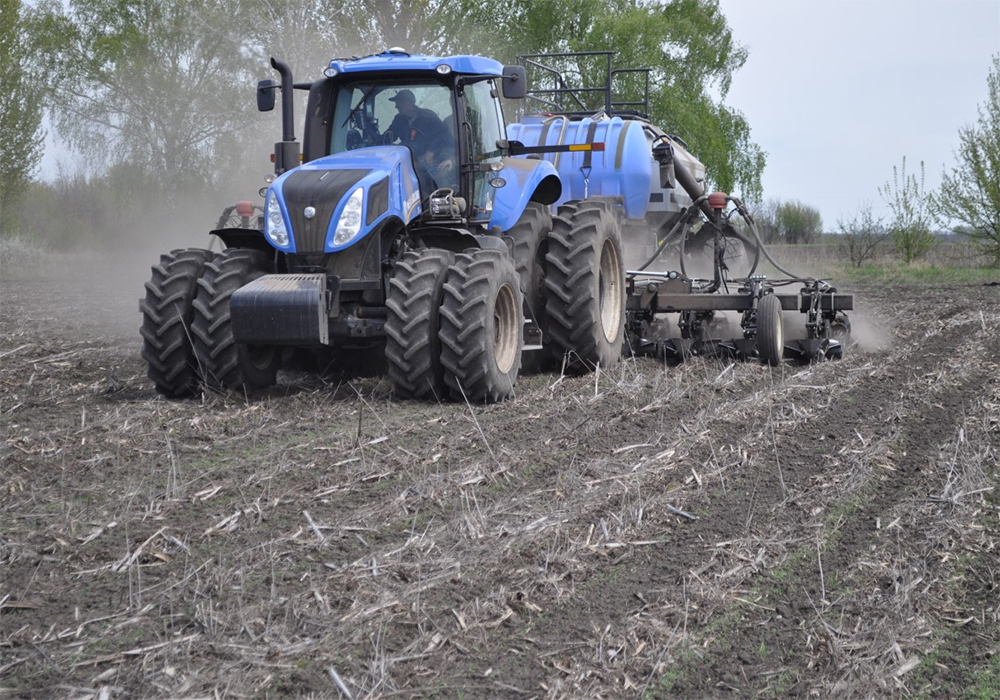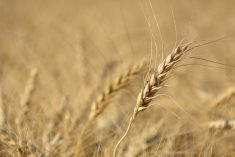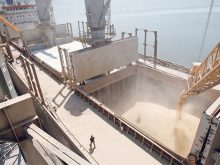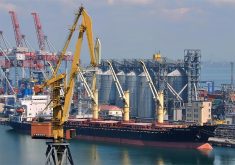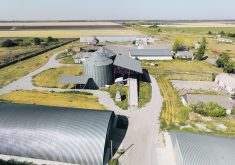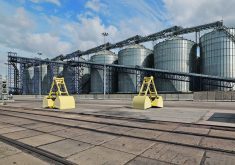Ukrainians will farm their land, even in the face of war.
In the Kherson area of southern Ukraine, where war rages and the city of Kherson is seen by the Russian invaders as strategic, a column set out on March 14.
This was a column of tractors, under the flag of Ukraine. In it were farmers and ordinary citizens, determined to directly declare to the occupiers that Ukraine will not comply with their demands and will sow grain and harvest bread.
Read Also

VIDEO: Agritechnica Day 4: Robots and more robots, Nexat loves Canada and the trouble with tariffs
Agritechnica Day 4: Robots and more robots, Nexat loves Canada and the trouble with tariffs.
There is a story that, early in the invasion, when the first Russian soldiers entered southern Ukraine, an old woman approached them.
She advised the invaders to put seeds in their pockets. “Why?” asked the invaders.
“So, when you lie down in our soil, the seeds will sprout, and in this way, you will benefit people,” the old woman replied.
Missing friends
I would not like to find myself in the place of a farmer now, on whose fields rockets and mines fall every day.
Especially if at any moment hungry Russian soldiers can come to you and take away your property. Or, for fun, set fire to your tractors and combines. This is what is
happening in the regions of Ukraine occupied by the Russian army.
When I planned to write this article about Ukrainian farmers coping with the war for Canadian readers, I first planned to write about those people who work where it is most dangerous.
To this end, I called my friend Oleg, whose fields are located in the eastern part of the war, near Volnovakha, in the Donbass.
Today, the city of Volnovakha, after three weeks of fighting, has practically ceased to exist. People say that there is not a single whole house left.
But Oleg’s phone is silent, as is his social media account. I can only hope that everything is fine with him and his family.
I remembered how a few years ago I called Oleg. At this time, he was building a new house. I was surprised: why are you building a house, investing a lot of money where it is 20 kilometres from the front line? Then Oleg replied that this was his native land and he would not leave it.
But staying on the land in areas under occupation and the threat of war is a difficult and dangerous choice.
In a village in the Chernihiv region where my father lives and farms, Russian fascists killed civilians right on the street. The village has since been liberated and the locals mourn their losses even as they hope for a brighter future.
Challenges abound
First, I called Maxim Bernatsky, the head of the Rost-Agro company in the Poltava region of east-central Ukraine).
He and his father own several farms totalling about 25,000 acres. Bernatsky is a former school teacher who learned agriculture from beginning. Today, all farmers in Ukraine listen to his opinions.
No-till and strip-till technologies are used on Rost-Agro fields. The company produces seeds under its own brand. Here, grain is dried on wood, liquid fertilizers are used, agricultural machinery is repaired independently and the most modern technologies are used.
Bernatsky said while he was finding challenges, he quickly added he was in a better situation than many of his fellow farmers.
“After all, they don’t shoot here, and thanks to the Ukrainian army, we can work in peace,” he said.
“Also in the fall, we checked our agricultural machinery, stocked fuel, fertilizers and pesticides. Therefore, we are ready to go out into the field and sow.”
However, he said not all farmers have such a good situation.
Bernatsky said those farms that are still able to function are aiding the war effort and the country’s civilians.
“We are constantly transporting food to big cities, and allocating money to purchase ammunition for soldiers,” he said. “We still have money, but many farmers have already given away everything they had.”
Cash flow is going to quickly become part of the problem, he said. Many Ukrainian farmers saved their grain in storages, primarily corn and sunflower. They wanted to sell it in April at the highest price. But now all the ports of Ukraine are blocked by Russia. Selling grain is almost impossible.
Even if a farmers can find a buyer for grain, they won’t be able to bring it to them. Many bridges have been destroyed and cars can be fired upon on the road. It turns out that farmers theoretically have money — in the form of grain — but they cannot get it.
Bernatsky complained that he cannot deliver seeds to those farmers who have already paid for them. And this is a big problem with seeding time upon them.
In the longer run, he worries about the damage to the nation’s seaports and the destruction that has occurred during their capture and occupation.
Even if the ports are taken back tomorrow, it will take a long time to repair the equipment. This means that the export of grain will only be possible via railway to the west.
“This is still unrealistic,” Bernatsky said. “If we can’t sell our grain, then in the fall we won’t have the money to pay people’s salaries and buy resources to work with.”
Bernatsky doesn’t know what percentage of Ukraine’s farming acreage will be sown this spring. That depends on the Ukrainian army and the military assistance from abroad.
Stepan, another farmer-source of mine, runs a 7,500-acre farm in the Ternopil region of Ukraine.
This is also in the calm western part of the country, which receives millions of refugees from the eastern, southern and northern regions. At the same time, in my opinion, the Ternopil region is the most favourable region for agriculture in Ukraine. There are fertile soils and a lot of rain.
Stepan said his farm is a member of a large association of farmers in the region that centrally buy fuel, fertilizers, seeds and pesticides. That structure has been functioning well during these difficult times, and it is also a source of assistance between member farms.
Stepan, like other Ukrainian farmers, has already voluntarily donated a lot of money to help the Ukraine army and humanitarian tasks.
“We only think about victory, otherwise we will all be destroyed, all of Ukraine will be destroyed,” Stepan said. “Therefore, each of us is ready to give the last money for the army. But at the same time, we need to think about how to feed people both in Ukraine and in other countries.”
Stepan also managed to stock up on fuel, pesticides and fertilizers in autumn. A problem for him now is sourcing parts for agricultural machinery.
“Now I have to buy all the parts that dealers have, even if I don’t need them now,” Stepan said. “Dealers do their best to give us parts, but there are very few of them.”
He hopes private business will find new ways to deliver agricultural parts to Ukraine.
So far, farm labour has been exempted from the war effort, a recognition of the strategic importance of agriculture to Ukraine.
“I am glad that the government allows us to leave our machine operators at work and not take them into the army, this is very important,” Stepan said. “Our most valuable capital is people, reliable specialists.”
In the end, Stepan said the hope of all farmers is a victory for Ukraine in the coming weeks or months.
“Otherwise, we will not be able to sow and grow grain normally,” he said. “This will mean problems not only in Ukraine, but also in other countries.”

